Teachers biographies and class descriptions of the contactfestival 2012!
Levels:
On the first day we will focus on Principles in Contact Improvisation.
We are not seperating the classes into levels. Please read the descriptions and respect your own limits. The classes are open to any experience in dance and movement. Just make your decision depending on the themes of the classes!
The intensives you will choose while registring, the classes you can choose sponaniously at the festival.
| Intensives |
Classes |
|
|
|
Musicians |
| |
Tuesday |
Wednesday |
Friday |
Saturday |
|
| Katy Dymoke |
Jules Beckman |
Antje Schur |
Johan Nilsson |
Benno Enderlein |
Irene Sposetti |
| Oleg Soulimenko |
Julija Melnik |
Jori Snell |
Itay Yatuv |
Otto Akkanen |
Nathaniel Damon |
| Peter Aerni |
Catalina Chouhy |
Ilya Domanov |
|
|
Anir Leben |
| Mirva Mäkinen |
Jules Beckman |
Michael Parmenter |
|
|
Gabriel Rivano |
| Jess Curtis |
Fernanda C. Leite |
Ramon Roig |
|
|
|
| |
Riccardo Meneghini |
Manuela Blanchard |
|
|
|
|
| |
|
last update 23rd of July 12 |
|
| INTENSIVES |
| Katy Dymoke |
UK |
|
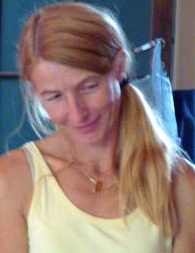 |
As a professional dancer and improviser, with a long established background of working in education, health and community contexts, Katy lives to dance. She is known for her work as company director of Touchdown Dance in the UK, Europe, South America, USA, Australia and India and has worked in collaboration with Angus Balbernie, Ray Chung, Lisa Nelson, Julyen Hamilton and Steve Paxton amongst others. Katy has been dancing CI for over 25 years as teacher and performer and has made several short Dance films, including a major Capture award to make a 10 minute film of contact improvisation called SENSE-8. Katy is BMC® practitioner and Teacher and she directs the Somatic Movement Education Program in the UK and the Performing Arts Application program with Mark Taylor (U.S.) in the UK and Argentina. Katy is a registered Dance Movement psychotherapist, and is writing a PhD on the impact of touch in clinical practice. She is also setting up a masters course in DMP with BMC. A lover of the outdoors and physical activity and somatic practice, Katy also has a 3rd Dan in Jujitsu; “I have a strong belief in centred, mindful, movement practice to support full bodied, dynamically rich and generous dancing." |
|
| Unfamiliar places |
|
When dancing the body likes to slip in and out of movements like clothes that fit comfortably. When dancing contact improvisation the body is awakened to movement making that is at times unfamiliar. Sometimes we feel uncomfortable in the unfamiliar, like new clothes that need wearing in, wearing out. We will explore being in the moment of moving and notice the unfamiliar as it becomes familiar, As a developmental process we are learning to soften, breathe and feel fully engaged in moving, ready to redirect and shift in the moment. In moving in relationship with other the “wearing-in of the clothes” starts to involve another person and the unfamiliar moments abound.
Body Mind Centering is based in experiential anatomy, movement repatterning and developmental movement. We will explore the dance with reference to the body systems and developmental movement, slipping in and out of the detail as we explore form and flow in the dance. The centring of body whilst relating to other, to forces, to space, makes the slipping into movement familiar and the unfamiliar need not restrict us, so that the body is fully engaged in the flow, even in the unfamiliar places. Maybe we have to bring large clothes so we can step inside each-others?! |
| Oleg Soulimenko |
RUS/A |
|
 |
dancer, performer and choreographer, works and lives in Vienna and Moscow. After graduating from Moscow Technical University in construction engineering he decided to become a dancer. He studied improvisation, acting and dance in Moscow, the US and various European countries. In the 90-ies Oleg founded Saira Blanche Theatre, which developed a deeply sophisticated, strong and provocative performance practice of improvisation and whose work was shown throughout Europe and the US. In 1993 he founded the first Contact Improvisation Centre in Russia.
Since 1991 Oleg has been teaching improvisation, composition and performance art at various institutions and festivals such as: SEAD Salzburg Experimental Academy of Dance, Tanzquartier Wien in Vienna, Tanzwerkstatt Europa in Munich, Movement Research in New York, Choreographic Center NRW in Essen, the Improvisation Festival in Budapest, the Vaganova Ballet Academy in St. Petersburg and many others . Oleg has collaborated with such artist as Lisa Nelson, Steve Paxton, Meg Stuart, Daniel Lepkoff... His performances have been shown in Europe and the US at: Performa in New York, Tanzhaus Wasserwerk in Zurich, Tanz im August in Berlin, Kaai Theatre in Brussels. |
|
Contact improvisation with a virtual partner
|
|
In our workshop we will explore absence as part of contact improvisation. Starting with specific contact improvisation exercises we will gradually switch our focus from improvisations with a dancer to movements that reflect his or her absence. Contact will become isolation to turn into contact again; touch might change into de-touch to lead us to a different sensation of the other, his or her absence as well as his or her presence.
Thus we will work with our imagination to create a virtual presence. We will, for example, be able to dance with our "ideal" partners, our best friends who are not there or with cult figures from dance history.
We will experiment with situations where we dance with one "real" and one "fake" partner, thus arriving at various combinations and formations. This experience will bring about a new perception of our body language and an expansion of our dance vocabulary: closely observing our movements will enable us to go beyond the limits of our patterns. A new perception will certainly lead to unfamiliar dance movements ....
We are also going to work with language, describing and commenting on our improvisations with our real or virtual partners, our experience of presence and absence. |
| Peter Aerni |
CH |
|
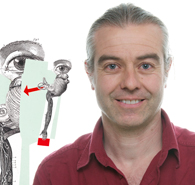 |
Peter is as much a visual artist as a dancer for improvisation. He studied fine arts (in French) followed by intensive studies of Contact Improvisation (in German and English). His studies in dance made him travel in Europe and the US to meet many of the CI teachers of the first and second generation. He studied intensively for two years at Tanzfabrik Berlin and followed Nancy Stark Smith in the Developement of the Underscore. His teaching is strongly influenced by his visual background and has a focus on perception and its analysis in space in function of the body (e.g. Lisa Nelson/ tuning score). He uses different forms of interaction (hand), observation (eye) and notation (head).
He has a wide horizon of teaching experiences including very different formats, all levels and ages. In his artistic work his focus is on drawing, sculpture and photography. For many years he has been also working with site specific performances for the camera.
He is Co-Organizer of the Bern Jam and organizer of RRR Bern, a festival for transdiscipinary Improvisation with music, movement and visual art. He is a teacher at the Bern University of Arts in the interdisciplinary departement and a freelance artist and pedagogue. |
|
| Gestures in CI: tracing the body and reading the other |
|
We look at CI from it’s beginning in 1972 and learn to approach it from now. How do we read it from the inside, how do we interprete its hidden codes, how do we learn it now. And how does it develop in time?
In this class I will focus on the relationship between the body, the gesture and your partner – from the inside and from the outside. Where is the center at any moment and how do you change your awareness for it? A physical warm up leads towards more specific questions of room awareness and self awareness. Our position in space and time is in a permanent dialogue with everything else. The complex body–mind system of our perception is part of what we look at. We start with the practice of basic excercises and continue to work as a group within the whole space using scores to define our interest and provide a direction for the exploration.
Improvisation will be a tool for exploring the processus of feedback in moving in space and drawing or writing on paper. Observing, watching, witnessing and looking at how these activities are transferred through the body, translated by language, remodeled by our imagination. Different roles will serve different purposes: me as a mover, a witness, a documentary mover, an observing mover, a writing mover or may be the other way around: a moving writer. Let’s turn the head and the body and reinvestigate the dance.
NOTE: This class is open for all levels. Please bring your favorite pens, pencils and brushes and your favorite paper, sketch book or paper rolls with you. We will provide plain white A3 (30 x 42 cm) paper. |
| Mirva Mäkinen |
FIN |
|
 |
I’ve graduated from the Dance Department of the Theatre Academy of Finland in 2000 (Masters of Art in Dance), later I did a master in Physical Education in the University of Jyväskylä. After these studies I have worked widely in Finland as a dancer, a dance teacher and a choreographer. My true passion is in movement. 2010 I was chosen to do doctoral studies (PHD) in Theatre Academy in Helsinki, Finland. My research is about "Aesthetics of Contact improvisation". From 2000 onwards I have worked as dance teacher at the Kallio Upper Secondary School of Performing Arts in Finland. I have taught at different international dance and contact improvisation festivals.
As a dancer I have worked in different dance companies, at the moment in Karttunen Kollektiv, Circo Aero and with Joona Halonen. During 2010-2011 I was in USA (University of Nevada, University of Colorado and Earthdance) as a Fulbright scholar.
In dance I am interested in the feeling of flow and soft movement. I love to investigate movement, its rhythm and different ways of inhabiting the body. Being able to switch the body from total relaxation to extreme intensity and tension creates a feeling of dancing. I call this, the body’s ability to breath and create movement. My ideal is total presence, which makes every moment true and meaningful. |
|
The dialogue between movement and touch
|
|
Movement and touch are key elements for me in creating a dynamic development of the experience in contact improvisation and dance. I am always curious to find tools what help to dance contact improvisation. How to create an alive dancing dialogue by using touch, weight and balance? I am interested what kind of details we can find from the dance by listening to the life situation. I remind myself that in every moment there are many possibilities where I can guide or allow dance to go. What is happening between movement and touch? I am curious, how well we recognize when we are leading or following the dance or when being just passive? What are my habits in dance and what are the directions in movement where I never want to go? Often I wonder, how can we continue movement after loosing touch from our partner. Is there any gap between or is it just part of the dialogue? I keep on asking, where movement is coming from and where is it going to? Is there a difference when I am moving alone or with a partner? So this intensive will be lot about what kind of choices we make in dance and technical tools for contact improvisation.
I think body is designed by nature, or has evolved in nature. It is like a landscape with great efficiency. Like landscapes we are breathing and changing naturally. |
|
| Jess Curtis |
USA |
|
 |
Jess Curtis has created a body of work ranging from the underground extremes of Mission District Warehouses with Contraband and CORE (1985-1998) to the formal refinement and exuberance of European State Theaters and Circus Tents with Compagnie Cahin-Caha and Jess Curtis/Gravity (1998-present). Often working within a paradigm of collaboration and co-authorship, he has also produced thoughtful and engaging work with a number of innovative artists including Maria Francesca Scaroni, Jörg Müller, Claire Cunningham and the FabrikCompanie in Potsdam, Germany. He has been commissioned to create works for companies such as Artblau in Germany, ContactArt in Milan, Italy, Blue Eyed Soul Dance Company in England, and Croi Glan Integrated Dance in Ireland. Recently awarded the prestigious 2011 Alpert Award in the Arts for choreography, Curtis and Gravity have received a total of six Isadora Duncan Dance awards and a Fringe First Award at the Edinburgh Fringe Festival for fallen, which went on to tour to over 40 cities in 9 countries. Curtis teaches Dance, Contact Improvisation, and Interdisciplinary Performance throughout the US and Europe and has been a visiting professor at UC Berkeley and the University of the Arts in Berlin. He holds an MFA in Choreography from UC Davis and is currently pursuing a PhD in Performance Studiesl there, focusing on the embodied reception of movement-based performance. www.jesscurtisgravity.org |
|
Exploring Synesthetic Connections: Dancing Between Senses
|
|
How do our senses inform, support, interrupt and confuse each other? What is in the space between sensing and doing? How do we know what we know? How does doing create sensing? How do we enact our perception(s)?
In this workshop we will work from the most basic building blocks of experience, unpacking sensation, perception, impulse, cognition, reflex, and action in order to create more space between them in which to locate our dances. Layering synesthetic sensory-motor skill sets we will ground in and surf through twisting topologies of flesh and blood to enact perceptual acrobatics that bring us into new dimensions of world. Is freedom the state of having choices, or a state beyond choosing? We will look at both possibilities smash them together to see what kind of messy reality we can construct for ourselves.
-OK I admit I have been reading a lot lately but not everything will be lofty and intellectual. Talking will have its place here, but in balance. – . (Intermittent referencing of Deleuze, Massumi, Merlau-Ponty and Spinoza at no extra charge for those who are interested.)
We will work in the sweaty modes of physical performance where weight, momentum, desire and adrenalin intervene in conceptual structures to create pleasure, satisfaction and a rich ranging of dancing experience |
|
| |
|
|
| CLASSES |
|
| TUESDAY |
| Jules Beckman |
F/USA |
double class 14:00-16:00 + 16:30-18:30!! |
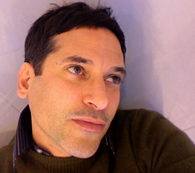 |
Is an American interdisciplinary artist and teacher living in France. He's been making work, touring and teaching since 1987. Collaborations include : Collectif AOC/ K.Vyncke (’09-‘13), libertivore (‘05-?), Mark Tompkins (’05-‘08), Cahin-caha (’98-‘06), Core (‘95-‘98), Contraband/Sara S. Mann (‘87-‘95), Anna Halprin (’90- ‘97), K. Hennessy (‘87- ?) Zaccho (‘96-98). He has taught throughout USA and Europe, in Russia, Mexico and Japan, including 1001 Fest (FR), Centre National des Art du Cirque, DOCH (Univ. of Dance/Circus, Stockholm), Canaldanse/Paris, MADE in France (a Washington Univ. program), New College (CA), Connecticut, Holyoke and Prescott Colleges. |
|
Deep Listening
|
Principles |
| This class will begin as an eyes-closed voyage : a personal exploration that becomes a collective adventure. I induce our original state : suspended in water, as in our mothers’ wombs. We (re)discover our skin, muscles, bones. Sensing blood as the nectar of weight, weight-sharing becomes fluid. As our eyes open, and our social animality is engaged visually, we make choices differently but without losing the intimacy with ourselves and depth of dimension we experienced with closed eyes. We play with marked time, limited space, rhythm, territoriality, the pleasure of pressure, of pushing, the desire to fly, polyrhythm, counterpoint, autonomy and contrast. |
| Julija Melnik |
Lithuania |
|
 |
She has a master in Social Science, is a dance teacher, a performer and improviser, an events organizer, leading regular CI classes, jams and workshops in Lithuania since 2006. Besides (and before) CI, Julija has been dancing and teaching street dance. She is also practicing Argentinean tango, house dance, salsa and contemporary dance. Her movement research is inspired a lot by her work with Steve Paxton, Daniel Lepkoff, Nancy Stark Smith, Julyen Hamilton, David Zambrano, as well as other improvisers, different dance styles, musicians, meditation, bodywork, researches in contemporary education, psychology, philosophy, physics and other science. |
|
| I see you |
Principles |
| We all have our own space and live in our personal reality in which we are meeting with others. Sometimes we find ourselves in a “neutral zone”, outside the borders of our realities, and then the words come: “I see you”... What is reality? How can we meet with other(s) in the “same” reality, if we perceive it personally, from our point of view, charged with our past experience? In this workshop I will share some tools, and the “invisible” movement technique, that will bring more precision, consciousness and presence in our movement and dance. We will explore, observe, reflect, witness each other, and bring our experience into performance. Come ready to see yourself and others. |
| Catalina Chouhy |
Uruguay |
|
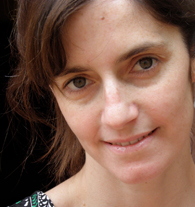 |
CI teacher and dancer. Degree in Physical Education. Committed to the development of CI in her country. Taught in Amsterdam, Río de Janeiro and teaches in Uruguay. Co-organizes the Montevideo Contact Festival as well as workshops with foreign teachers. Worked as dancer and director in contemporary dance pieces and performed in improvisational events. Her work is influenced and inspired by Janet Lott, Florencia Martinelli, Nancy Stark Smith, Mike Vargas, Ray Chung, Julyen Hamilton, Kirstie Simson. Guest student at the SNDO, Amsterdam. Specialized in Artistic Gymnastics at the School of Sports Sciences in Leipzig, (Ger).Thai massage therapist. |
|
| Weight lightness response |
Principles |
| This class is an invitation to focus on the whispering dialogues which happen as we give and receive weight. We will research on how giving and receiving weight is a conversation, something like an agreement and a shared responsibility. Which are the directions of the structure? Which are its fragile and strong parts? Where am I going to give weight? How much weight am I going to share? How is the weight of my own structure distributed? How do I cast my own weight on my partner’s structure? How do I inform my partner about the structure I need? How can I deliberately become lighter? Can I retreat and contemplate? |
|
|
| Fernanda Carvalho Leite |
BR |
|
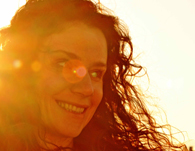 |
She began her career as dancer and actress in 1992 but was an athlete in childhood and teen ages. In 1998 started to practice CI with KJ Holmes in NYC. Since 2001 she is teaching, producing workshops, performances and CI jams in Porto Alegre. Performed with Nancy S.Smith, Andrew Harwood, Paula Zacharias, Ralf Jaroschinski, Cristina Turdo, Ester M. Ribas and others. In 2004 she post-graduated in the course of Specialization in Pedagogy of the Body and Health in the Universidade Federal do Rio Grande do Sul and developed her conclusion work on CI. She has created “Sul em Contato”, producing CI ws with foreign teachers. She works as actress on theatre and cinema and is interested in developing structures for Improvisation and CI in performance. |
|
Contactviewpoints
|
Principles |
| The class will be developed specially in four moments: perception and access the own inner space and time (body and breath) in relation with the floor; exploring the movement on your kinesphere in low, medium and high levels; the connection with others kinespheres and qualities of contact and finally the relation with the whole space around. Going from the inside to outside, attentive to the space and time between all this and the constant exchange in this relation to inspire and keep the connection in our dance. The class has basic ingredients of CI and some condiments from the Viewpoints method for group improvisation to keep a fresh flavor in the dance. |
| Riccardo Meneghini |
UK/IT |
|
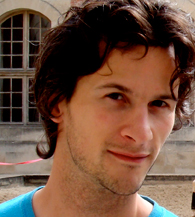 |
He has a background in competitive judo. He has a Diploma in Physical Education and attended professional courses at “Accademia Isola Danza” (Venice) artistic director Carolyn Carlson and Laban Centre London as G.D.P. (graduate diploma in performance). He has worked as a dance artist with such choreographers as Russell Maliphant, Rui Horta, Carolyn Carlson, and companies including Scottish Dance Theatre, DV8 Physical Theatre, while developing his own choreography and working as a freelance performer and teacher. Riccardo met CI in 1997 in Italy with MariaTullia Pedrotti and later on following the work of Dieter Heitkamp. |
|
| Center in Motion |
Principles |
| We will explore individual dynamics through specific exercises developing a clear purpose and exchange in the contact. The dance will develop from the interaction between balance, gravity, time, weight, touch and intention. Through the class it will be possible to access our playfulness and recognize how the state of mind affects our dance. We will experience how to move from our center with the support of the floor, our partner and the space around. The aim is to develop the ability to be strong and delicate, active and reactive, sensitive to a sincere dialogue through movement and touch. |
|
|
|
|
| WEDNESDAY |
| Antje Schur |
F/GER |
|
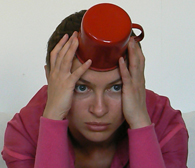 |
Since 1994 she practices contemporary dance and CI. She studied CI mainly with Dieter Heitkamp and Howard Sonenklar. In 1996 she starts teaching CI at Palucca School Dresden. In 1998 she meets Mark Tompkins and dances in his company from 1999-2001. In 2002 she co-founds the Cie Dégadézo with Régine Westen¬hoeffer, Xavier Fassion and Eckhard Müller, in Strasbourg. Since then, they work together on various performance projects and teach regularly at the National Theater School, Marc Bloch University, Pôle Sud Theater and the Choreographic Center, in Strasbourg. As a dancer she collaborated with the Co RATZANKOR, DoTheater, Dieter Heitkamp and Co.ManDrake-Toméo Verges among others. Since 2009 she is doing a formation to become a Shiatsu practitioner. |
|
| Contact-Intuition |
Bodywork into dancing |
| In order to release useless tension in the bodies and to reenergize ourselves as well as the partner for the next dance we will start from gentle pressure given by our hands and other parts of the body into the body of our partner. Shiatsu-knowledge and our intuition will guide us to the areas that are asking for attention. With playfulness we will find the adapted way of touching and may be this will lead us into the beginning of a new dance. |
| Jori Snell |
DK/NL |
|
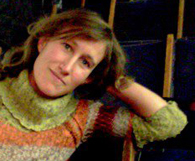 |
Is a freelance physical performing-artist and dancer (Holland/Denmark), educated at The Institute of Scenic Arts in Italy and Nordic Theatre School in Denmark. Since 1998 she works as a freelance performer and educator in Europe and is now based in South Africa, where she performs, directs and runs regular classes in Contact Improvisation. She has worked as a dancer/performer for Corona la Balance (Denmark), Panthéâtre, Roy Hart Theatre (France), Odin Teatret (Denmark) and FTH:K (South Africa). Her greatest inspiration in CI and Improvisation has come from her intensive work with Kirstie Simson, as well as Bo Madvig (DK), Katie Duck (USA), and Lucia Walker (UK). |
|
Eyes as Windows
|
|
| How do I (re-) discover my dance alone and with others? Putting it under a playful microscope: taking snapshots, close ups, finding blurry long distance shots or panoramic shots. Through playing with our eyes and the information the eyes in return give our body and movement, we can access the enormous possibilities the unfolding dance holds. How do we let the ‘story’ of our dance take its own lead, meanwhile recognizing it? What do we tell with our dance? Being both in and out at the same time. When playing with ranges of perspectives; frog-view, bird-view, middle and long-view we can expand the vocabulary of our dance in and out of different landscapes. We’ll work with observing and being observed, as an engaging and active tool for our improvisation and image-making. |
| Ilya Domanov |
IL/RUS |
|
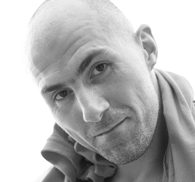 |
Actor, performer and teacher. Originally from Moscow. He graduated at the Center of Acting art and the Academy of Eurhythmy. He lives in Tel-Aviv from 2005. Since 2000 he has worked as a CI teacher and performer/director in Israel, Russia and Europe. He brings his acting skills and his Improvisation, Performance and CI background, to the exploration of the art of dance and movement. Over the last years, he has participated in many independent productions in Israel and Europe, and produced his own dance works. Ilya has been collaborating regularly with Ilanit Tadmor, working with theatres -“Malenky” and “Tmuna” as an actor and choreographer and as a core member of the teaching team at “Play” Center. |
|
Wings and Feathers
|
beginners |
| During our class we will play with balance and momentum. We will investigate ways of using the body, the voice, the imagination and the attention to develop and expand the range of expression in our dance. We will use basic skills of contact and actors training, to give our selves the opportunity to be total with body, emotions and mind, inside the dance. We will play dynamic games and use fun exercises to draw attention to the possibilities of humor and seriousness. Throughout we will be concerned to maintain the passion and joy within each dance. |
| Michael Parmenter |
NZ |
|
 |
Studied with Erick Hawkins and Min Tanaka and danced with Stephen Petronio and Dancers. He first studied CI in the 80’s with Danny Lepkoff and his interest in partner-improvisation has included work with Capoeira and Body Weather and on-going study of tango. He has choreographed for his own and other companies for 30 years and taught at leading dance institutions in New Zealand since 1988. His Master’s thesis Hand to Hand and his Doctoral research Gestures of Desire both concern aspects of improvisation and inter-subjectivity in dance. Out of this research he has developed two contact-partner-improvisation forms: Piloting and Tactics. |
|
Who’s Zoomin’ Who?
|
|
| In this class we will explore what I call ‘a-subjective movement’: movement which is visited on the body from the outside, in this case by another dancer. Through techniques of piloted movement, interruption, suspension, intensification, move-the-relation, we will discover how unimaginable events can occur when two independent ‘Tactors’ play upon each other at the same time. Of particular importance is the notion of “Idio-rhythm”, by which each dancer maintains his/her independent rhythmical life, thus opening up the possibility of both complicity or conflict of intention between dancers. |
| Ramon Roig |
E |
|
 |
In the middle of 90's I turn my attention to contemporary dance and not until 2000 that I put my focus on the CI. Since then I have allowed this idea to evolve in my way of understanding dance. My wish is to guide people trough CI respecting their own way of understand it. In my personal work I use the CI, video-dance and performing in public spaces. Since 2001 I teach in different places in Spain and Europe
. From 2002 organizing the CI Meeting BCN, inviting different international teacher like: Cathie Caraker, Frey Faust, Ray Chung, Karl Frost, Martin Keoghs Scott Wells, Daniel Lepkoff, etc. and organizing the weekly Jam in Centre Civic Barceloneta (Barcelona) |
|
Lift & Landing
|
|
| From body awareness to the world of images.
From its organic mechanisms, to the dialogue with others. Joints, balance, different notes that makes a melody together. An action that requires listening and understanding, traveling from the center to the ends of the body, from contraction to expansion paying attention at the transitions. We put the focus on the transitions toward what we might call flights. We will leave aside the desire to jump, wait for the moment of inertia and be surprised by the suspensions of their own dance. This practice offers us a more intimate relationship with the ground, the base for Lift and Landing. |
| Manuela Blanchard Russi |
CH |
this will happen outsite! |
 |
Is teaching contact improvisation and new dance since 2004 after having trained intensively and performed in dance, synchronised swimming, physical theatre and clown. Discovering improvised dance touched a very profound core in her, and led her to meet great teachers (such as Steve Paxton, Nancy Stark Smith, Kirstie Simson, Martin Keogh und Andrew Harwood) and to continue to explore the form with others. Manuela is also a body therapist, certified in WATSU®, WaterDance® and Esalen Massage. Her love for contact improvisation and aquatic bodywork has brought her to develop "Contact Dance in Water" as an integration of her different passions, and to teach it regularly in Switzerland and abroad. |
|
Earth- and Waterdance
|
|
| You are invited to start your dance just relaxing in nature well rooted in the ground and in dialogue between your center, the center of the earth and those of your partners. We will go on an inward journey where we will explore the resonance of our body landscapes in touch with the natural surrounding. Alone and in group, we will engage into a sensual and playful approach of our environment, using our skin and our senses as interfaces and spaces to meet. The small lake nearby might invite us to dance contact in water, experiencing an organic and fluid way of moving, playing with spirals and soft embraces, on the edge between weight and weightlessness. |
|
|
|
|
| FRIDAY |
| Johan Nilson |
Sweden |
|
 |
I like to use imagination and the faschination for small details as tools to create my own dance and to be the guide in contact with others. From fire-spinning comes the faschination of contiuosly travelling weight. In contact improvisation I like to relate to weight shifts and space and I definitely love to take a certain amount of risk. |
|
| Being alive |
bodywork into movement |
Shaking and vibrating soft parts and releasing spirals from the bones
Inside us in, in the bones, we have movement and tension. The bones are slowly moving, not only through growth and age, but also through an inner tension that gives gives them a certain structure and strengt. This inner tension shows itself in the shapes of waves and spirals. In this session we will make our softs parts available for this inner tension through a bodywork of vibrations and vigourous shaking. We will connect to the inner image of tension and spirals, an image of being alive in the bones, and with an spiraling intention from inside bring our bodies into to movement. Socks will be useful for the spiraling part |
| Itay Yatuv |
IL |
|
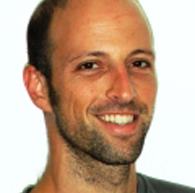 |
Artistic director of Hakvutza Dance School (www.hakvutza.org.il/eng), Itay has been practicing and teaching CI for 10 years. Trained as a contemporary dancer in New York, Italy and Israel. Choreographing independently for the last six years, Itay has been leading international projects of improvisational performances. Apart form Israel, He have taught workshops in Holland, France, Switzerland, Russia, Spain, Taiwan and China. |
|
| Can you hear it? |
|
| Two focuses for the class. The first one will be technical (principles), improving our floor work and the way we fall, alone and with a partner, the momentum we create and the ways to use it. As we continue, we'll examine the senses we use for our orientation while dancing and try to surprise ourselves while challenging some of them. |
|
|
|
|
| SATURDAY |
| Benno Enderlein |
GER |
|
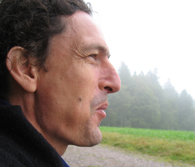 |
Teaching contact improvisation since 21 years. He is also Shiatsu practitioner since 20 years. His interest in contact is influenced by Nancy Stark Smith, Lisa Nelson, Dieter Heitkamp, Martin Keogh and many other also non contact teachers. Thank you! In his CI classes Benno is interested to increase the awareness of the dancers sensations and feelings. At the same time he focuses on the possibilities of growing beyond limitations (not only physically). He believes that someone who wants to learn, naturally expands his/her old behaviors and limits, to find new limits. Limits are natural. Growing and expanding is our natural state of being. |
|
| Present now |
bodywork into dancing |
| The class is based on movement exploration. Here are some statements we are going to look at: Contact improvisation is not only a physical dance form. Contact can be a meditation practice. Contact opens a huge inner space, where awareness can dance in. From HERE, every movement is possible. Contact Improvisaton is a dance which is limited by your mind. Meditation doesn’t always need to be slow and gentle. Allow your self to explore all kinds of experiences, specially those that are beyond your imagination. To be true to your self enables your full potential to interact. To be direct and honest to others is the natural state of (human)being. |
| Otto Akkanen |
FIN |
|
 |
Found CI on his twenties, got so involved that went to study dance for three years, graduated, and has ever since worked as an individual artist performing his solo works as well as performed within different improvisation groups and choreographies. However CI has stayed and stays his main practice. He has been teaching CI in various places like Moscow, St. Petersburg, Siberia, Ibiza, Berlin, Buenos Aires, Brazil and of course his "home" town Helsinki, Finland. For the last 6 years his most inspiring teachers have been the fellow teachers and dancers of Helsinki CI community with whom he is also organizing the "skiing on skin" festival in Finland. |
|
Shapes of Snakes
|
|
| On this workshop I would like to concentrate on spine and movement of the torso. When we can use the fluidity of the spine and when it's good to have it more strong support? Is it possible to combine this two qualities and have you spine fluid and strong, channeling the weight into the earth and support of the earth in to the spine. Of course our limbs are strongly connected to the spine, so we will use them as well. I also want to look at impulses. Most of us are used to give impulses and directions through our hands. Can we give impulses with our torso as well, with direction and clarity? |
|
| |
|
|
| MUSICIANS |
| Irene Sposetti |
Italy/Sweden |
|
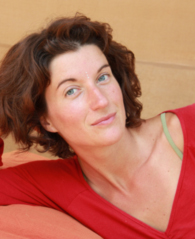 |
My musical studies started at a conservatory in Italy where I have been learning Flute, focusing on classical baroque music. There I was part of a classical choir for about 10 years, I have enjoyed discovering and performing a vast repertory from middle age to contemporary polyphonic music.I studied singing in classical western music and Indian Carnatic tradition.
I have been playing and singing in several concerts and recordings embracing classical, world, reggae, ambient and indian devotional music.
At present I am focused on improvisation.In the last seven years I have been organizing dance events and workshops, integrating live music in the dance practice; I have been participating as dance teacher & musician in festivals all over Europe and in India. I love to offer sound landscapes for dance and be always surprised by the incredibly creative dialogue that unfolds between movers, musicians and space. I love to walk in all colours and intensities, shades and atmospheres that originate from sound and imagination. |
| Nathaniel Damon |
USA/Germany |
|
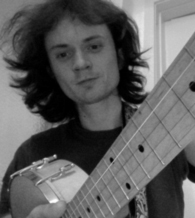 |
Explorer of sound and vocal styles, especially folk singing styles from around the world. He is the founder and director of the Weltmusik Chor Hamburg and gives workshops regularly in vocal improvisation and various ethnic singing styles. Banjo, violin, percussion and computer effects help create sound landscapes to support his singing. Although Nathaniel has been living and studying in Hamburg since 2004, his american roots can often be heard as an influence in his music.
Music for Jams
Since discovering contact improvisation in January 2011 it has been an amazingly rich inspiration for me on all levels. I am always thankful to take part in the amazing creative processes that often magically occur at jams. My goal as a musician at jams is to have open communication with the dancers and to find flow together, while moving carefully in the spaces between silence and sound. |
| Anir Leben |
Germany |
|
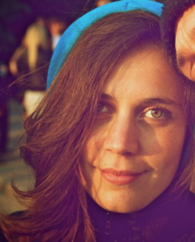 |
I'm a musical oriented dancer and a dancing oriented musician and vocalist.
When I dance, even without any sound, I get impulses for movement from
inner melody or rhythm and from principles that i experience through music.
There is loud and quiet, soft and rough, stillness and dynamic flow, pauses,
up and down, contrast, harmony, dissonance, co-existence and and and... I study dance, performance and improvisation at TIP and I teach Contact in Freiburg. I was studying Jazz-singing in Berlin for a while, when I fell in love with CI which gave me a seeming change of direction, which, as it turns out to be, is not totally correct.
Combining music with dance is as old as mankind is breathing earthly air,
to connect CI with sound however, is somehow quite different.
It has taken my interest for a few years now and i feel a nurturing richness in both impro-forms, music and dance, being able to feed each other with different kinds
of tasty delicious bits of gwummmmdschiimmmmdjammm :) |
| Gabriel Rivano |
Argentina |
|
 |
I'm a bandoneonist, flutist, guitarist and composer from Argentina. I inherited my bandoneon from my grandfather, Adolfo Perez Pocholo, who played with legendary names such as Firpo, Canaro and Gardel. I'm quite conscious of the tradition I represent but at the same time I want to be open for new possibilities and experiences. Since 1981 I performed in several countries in South America and Europe, as well as in Japan and Canada, with among other Cuarteto Cedron, Rodolfo Mederos, Hermeto Pascoal, Orquesta typica de Roberto Pansera and my own tango sextet. From 1987 I presented my own compositions on several prestigious stages. In 1997 the concerto for bandoneon, guitar and orchestra was performed in Buenos Aires.
I'm dancing contact since some years. For me it's a great experience to support jams as a musician. I'm experiencing for me as musician in interaction with improvised dance, that it's very important to incorporate the silence as another element of the performance. |
| |
|
|
























